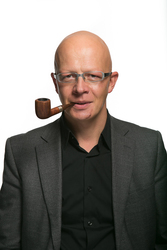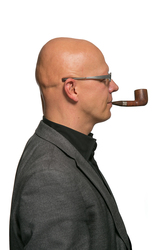Prof. Dr. Philipp Stoellger
University of Rostock
Curriculum Vitae
Phillip Stoellger studied protestant theology and philosophy in Göttingen, Tübingen and Frankfurt from 1987 to 1994. In 1995, he passed the theological exam of the Protestant-Lutheran State Church of Hannover and received the diploma in protestant theology from the University of Göttingen. From 1995 to 2000, he was Research Assistant at the Faculty of Theology of the University of Zurich, where he obtained his doctoral degree in 1999, with a thesis on “Methapher und Lebenswelt. Hans Blumenbergs Metaphorologie als hermeneutische Phänomenologie geschichtlicher Lebenswelten und ihr religionsphänomenologischer Horizont”. Following his time as managing Oberassistent of the Institute for Hermeneutics and Philosophy of Religion (Institut für Hermeneutik und Religionsphilosophie) at the Faculty of Theology of the University Zurich, where he obtained his post-doctorate lecturing qualification in 2006 with a treatise on “Passivität aus Passion. Zur Problemgeschichte einer categoria non grata”, and fellowships at the Law School of Yale University and the Wissenschaftskolleg zu Berlin, he was made Chair for Systematic Theology and Philosophy of Religion at the Faculty of Theology of the University of Rostock in 2007.
Apart from his research in theology and philosophy of religion, Stoellger’s interest lies in the field of interdisciplinary visual studies.
Prof. Dr. Philipp Stoellger was Fellow at the Käte Hamburger Center for Advanced Study in the Humanities “Law as Culture” from August 2011 to July 2012.
Research project
Interpretative authority and conflicts of interpretative authority between law and religion
Everyone would like to have it, many fight for it, some have it, and everyone talks about it – yet so far nobody can say exactly what it is: interpretative authority. How does it arise, ‘function’ and wither away, based on the example of religion and law? With the help of selected conflicts of interpretative authority, constellations of interpretation and power past and present are to be examined, in order to find out: What type of authority is interpretative authority? Why and how do interpretations become ‘authoritative’ (of experts, politicians or judges, institutions, discourses or dispositives, etc.), when and how are they recognized, or not recognized?
Interpretative authority is the authority to let something be seen or said in one way or another. From above, it is the power to interpret or, from below, the power of the recipients, who also interpret. Interpretative authority thus has two sides: from above, if a mighty institution or person lays out their view on things and seeks to impose it. In this way, a count could determine what applies. In this way, the German Federal Constitutional Court can wield its interpretative authority in conflicts. In this way, mass media can allow a party or government leader to appear in one light or the other, for instance by selecting images. From below, everyone is involved in interpretative processes, for everyone has their own view of things which they voice. Everybody is thus at leisure to either criticize or receive predetermined interpretations. There are indeed cases, in which interpretation becomes powerful from below, when it is shared by many. One can conceive of 1989 as such a case. Yet also the beginnings of Christianity where in this manner: a certain interpretation of God was shared by more and more ‘primal Christians’ and thus became world history.
Interpretative authority manifests itself in conflicts of interpretation. For interpretations are coupled with demands for applicability, which become conflictive in the dispute over differing interpretations of power and recognition. Interferences of semantics (interpretations) and structure (of power) are therefore to be investigated. A semantically tight-knit form of interpretative authority, along with the corresponding potential for conflict, is images. Their power to demonstrate becomes clearer when conceived as interpretative authority. For it is by showing something in one way or another (as something), thus interpreting it one way or another, that the act of demonstration unfolds its power. To this extent, the image not only lets something be seen, it makes ‘us’ see, and see in the way which it shows. Caricatures make this point all too clear.
Publications (selected)
- Stoellger, Philipp: Passivität aus Passion. Zur Problemgeschichte einer categoria non grata. Hermeneutische Untersuchungen zur Theologie, Tübingen 2010.
- Ratsch, Ulrich/ Stamatescu, I.O./ Stoellger, Philipp (Eds.): Kompetenzen der Bilder. Funktionen und Grenzen des Bildes in den Wissenschaften, Tübingen 2009.
- Dalferth,Ingolf U./ Stoellger, Philipp/ A. Hunziker (Eds.): Unmöglichkeiten. Zur Hermeneutik des Außerordentlichen, Tübingen 2009. Dalferth,Ingolf U./ Stoellger, Philipp (Eds.): Gott Nennen, Tübingen 2008.
- Stoellger, Philipp (Ed.): Sprachen der Macht. Gesten der Er- und Entmächtigung in Text und Interpretation. Interpretation Interdisziplinär Bd. 5, Würzburg 2008.
(You can find a complete list of Prof. Dr. Stoellger’s publications here)




